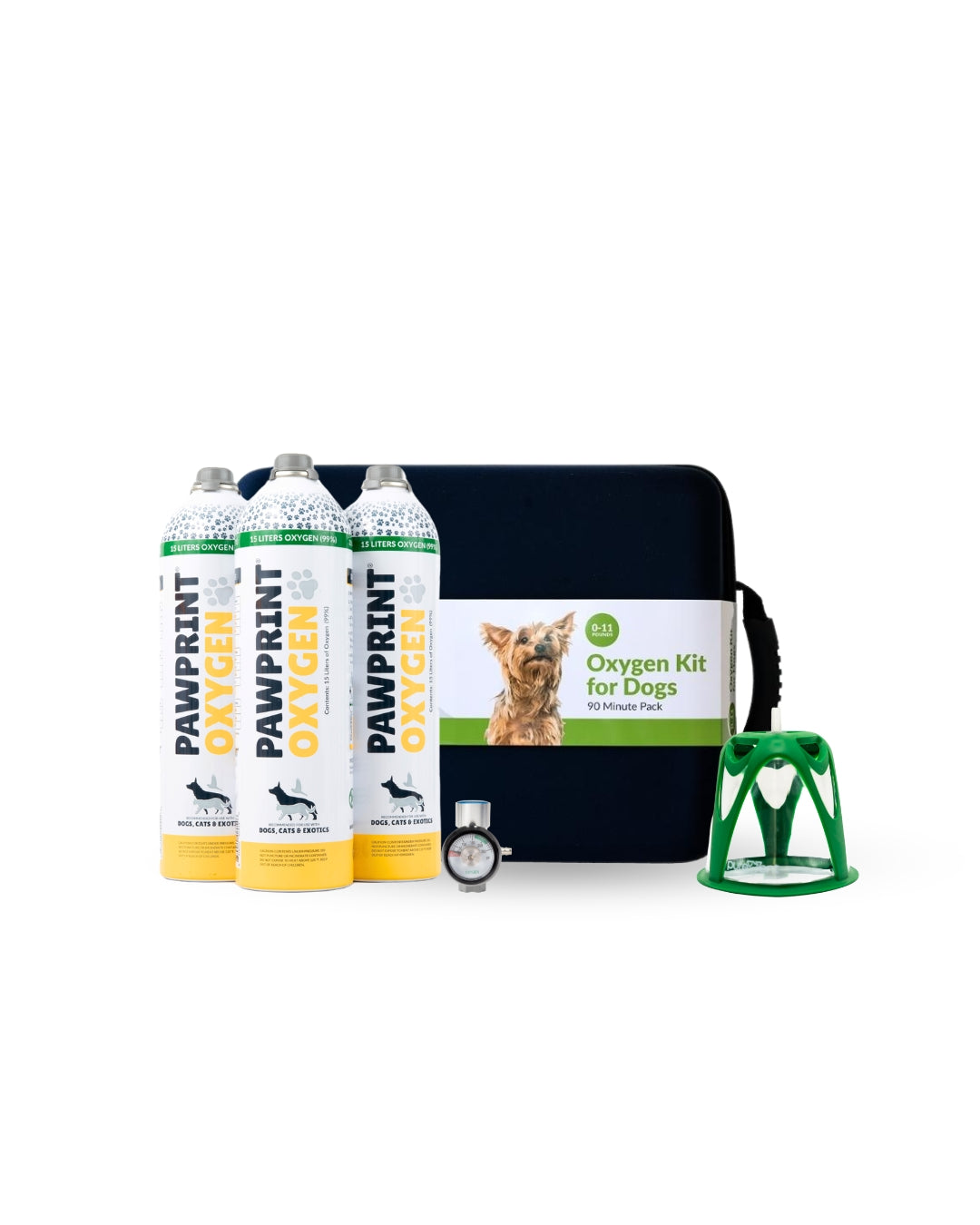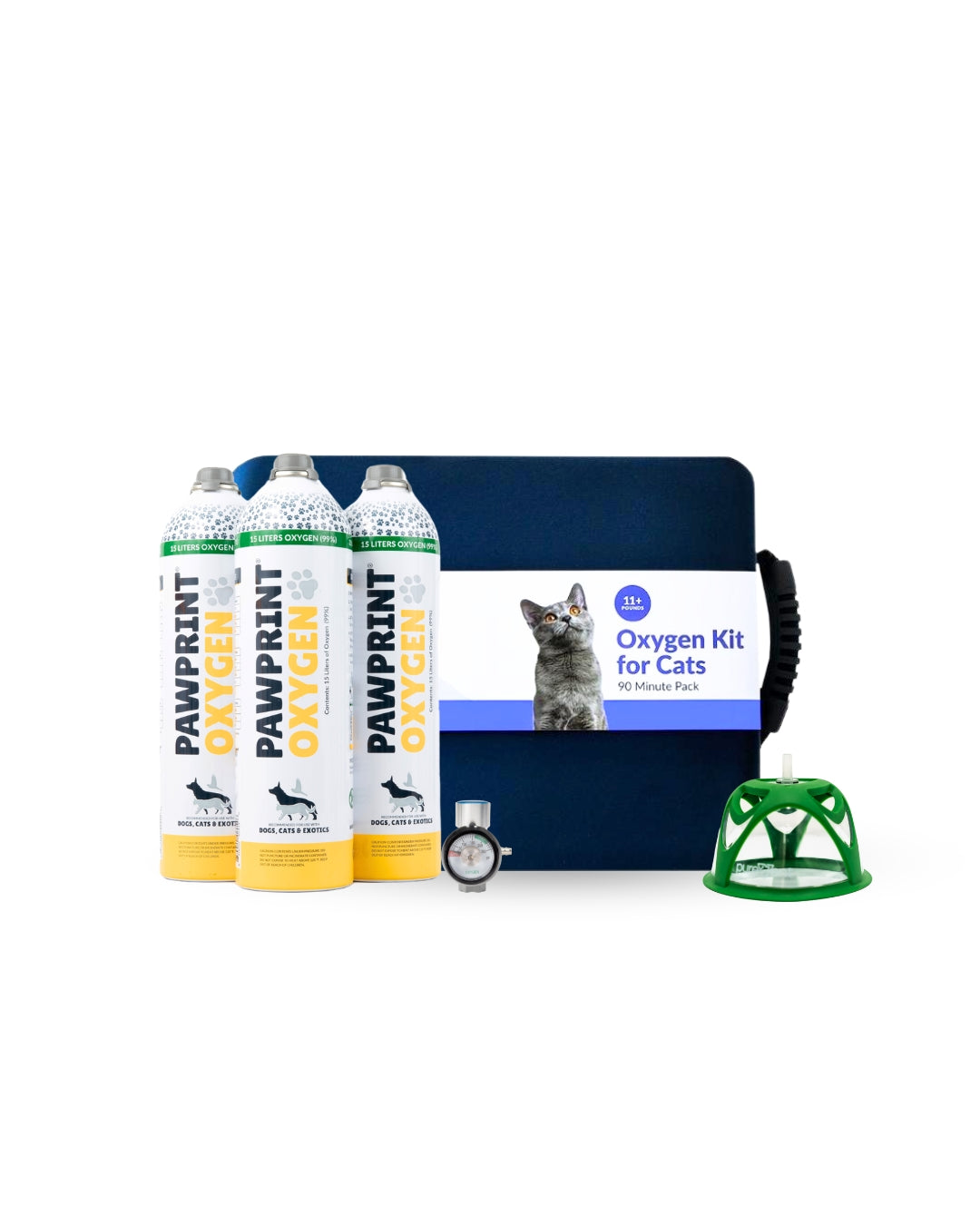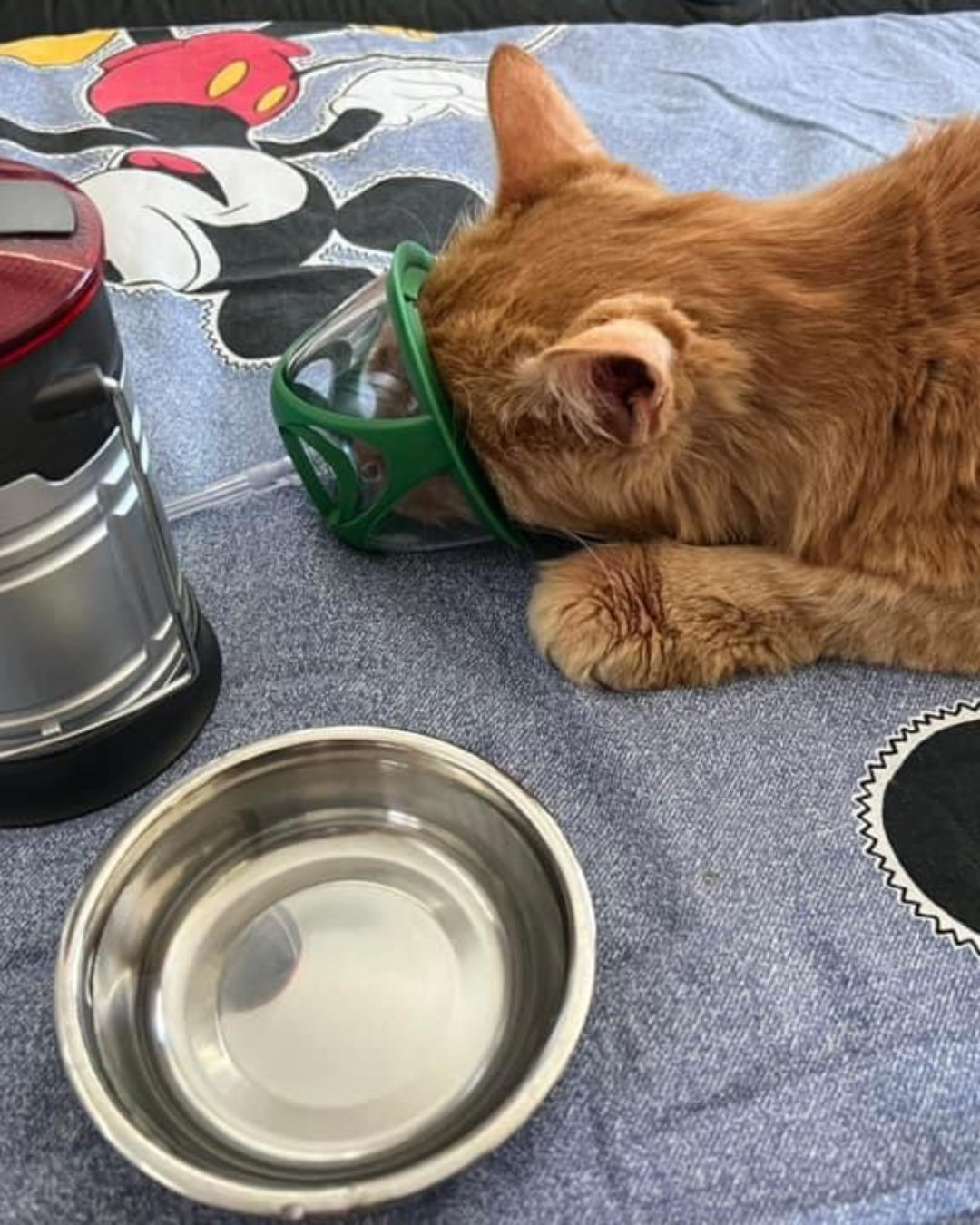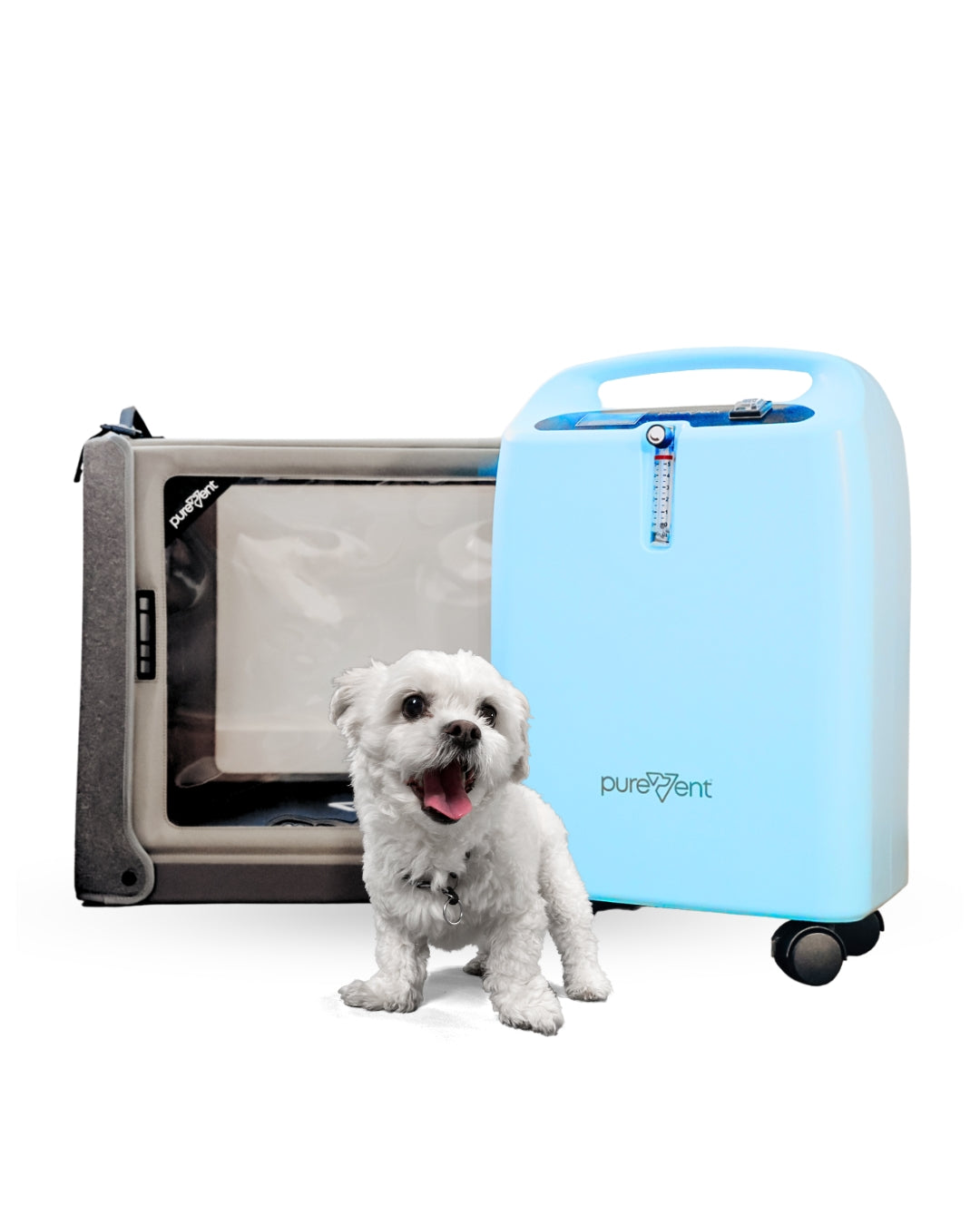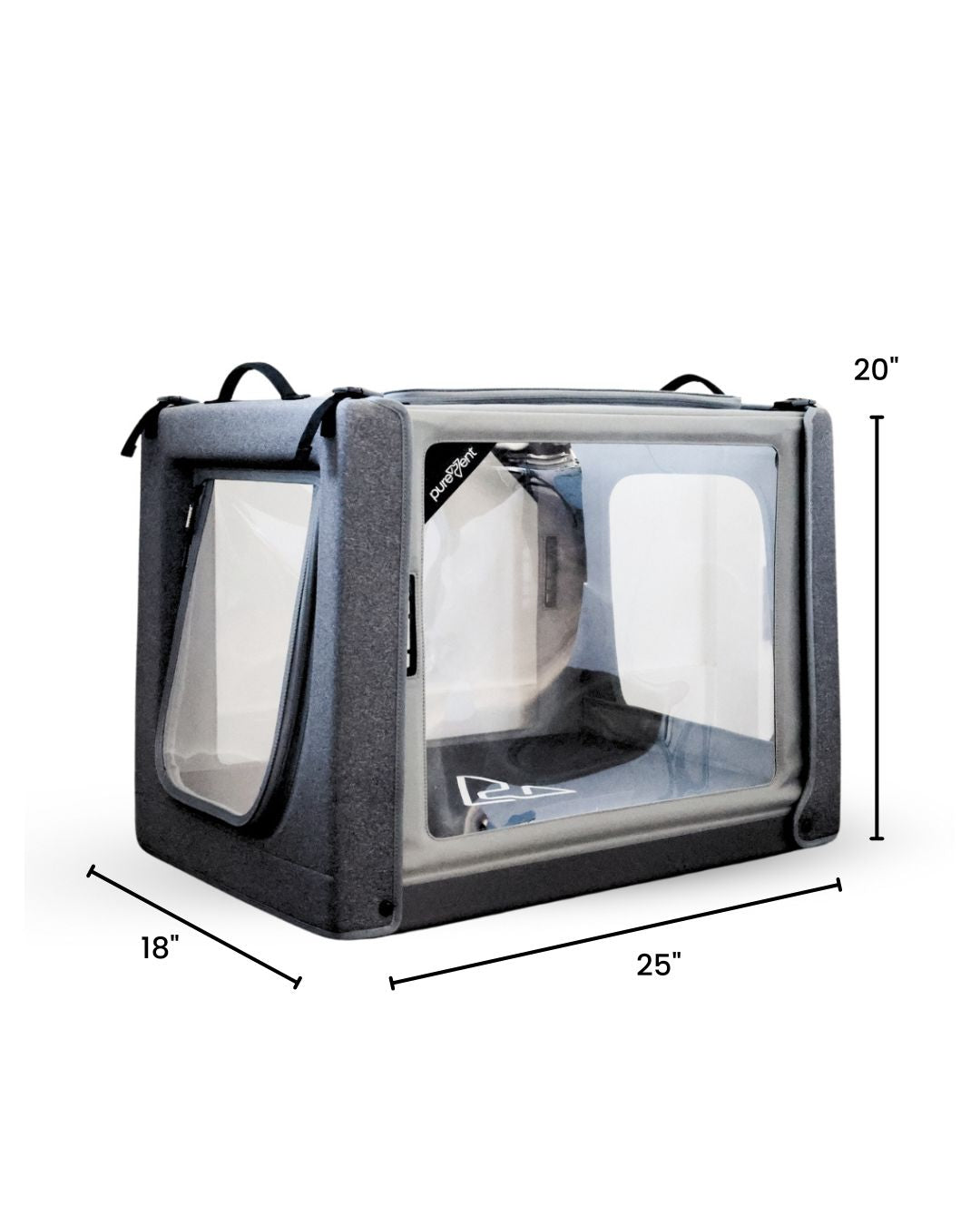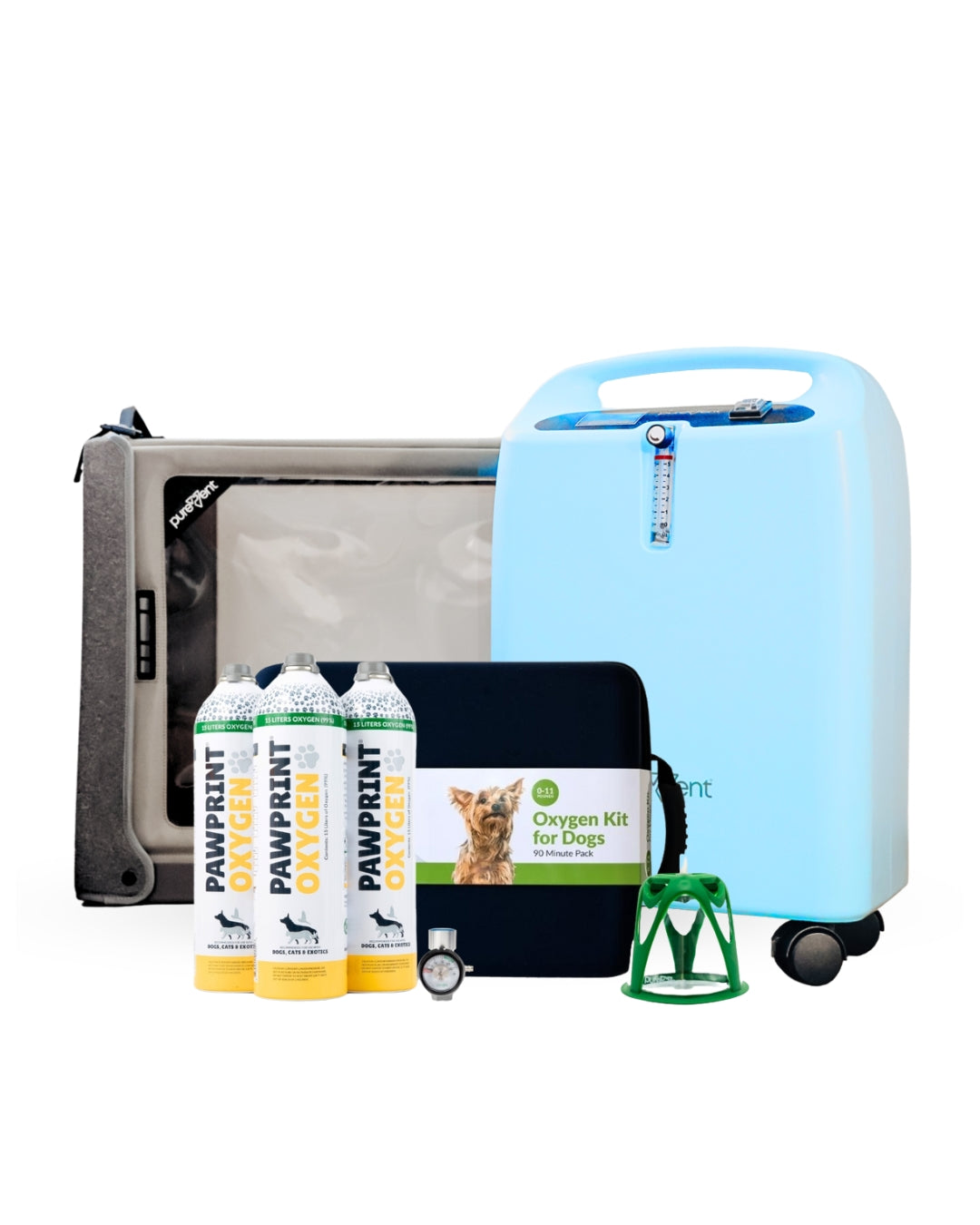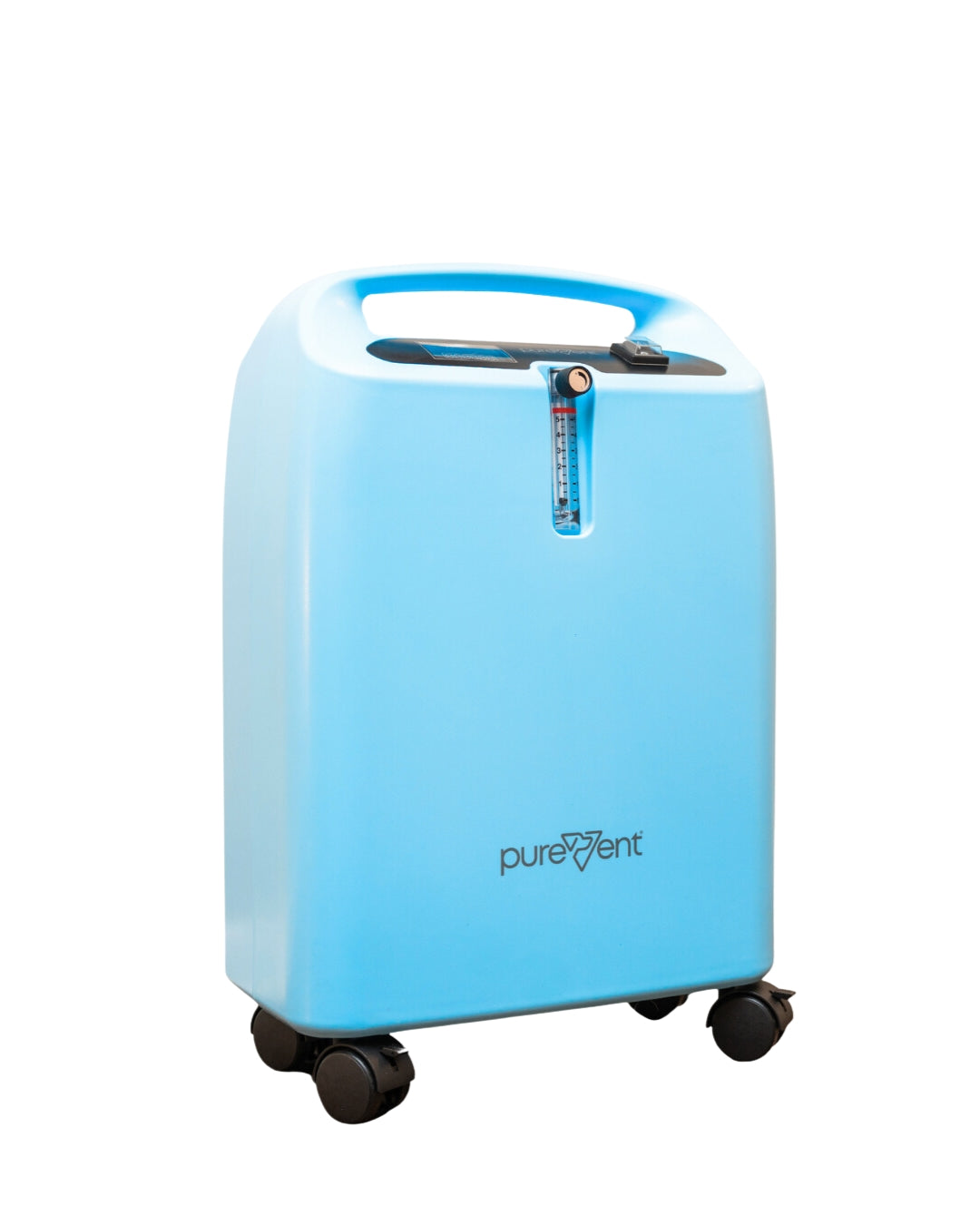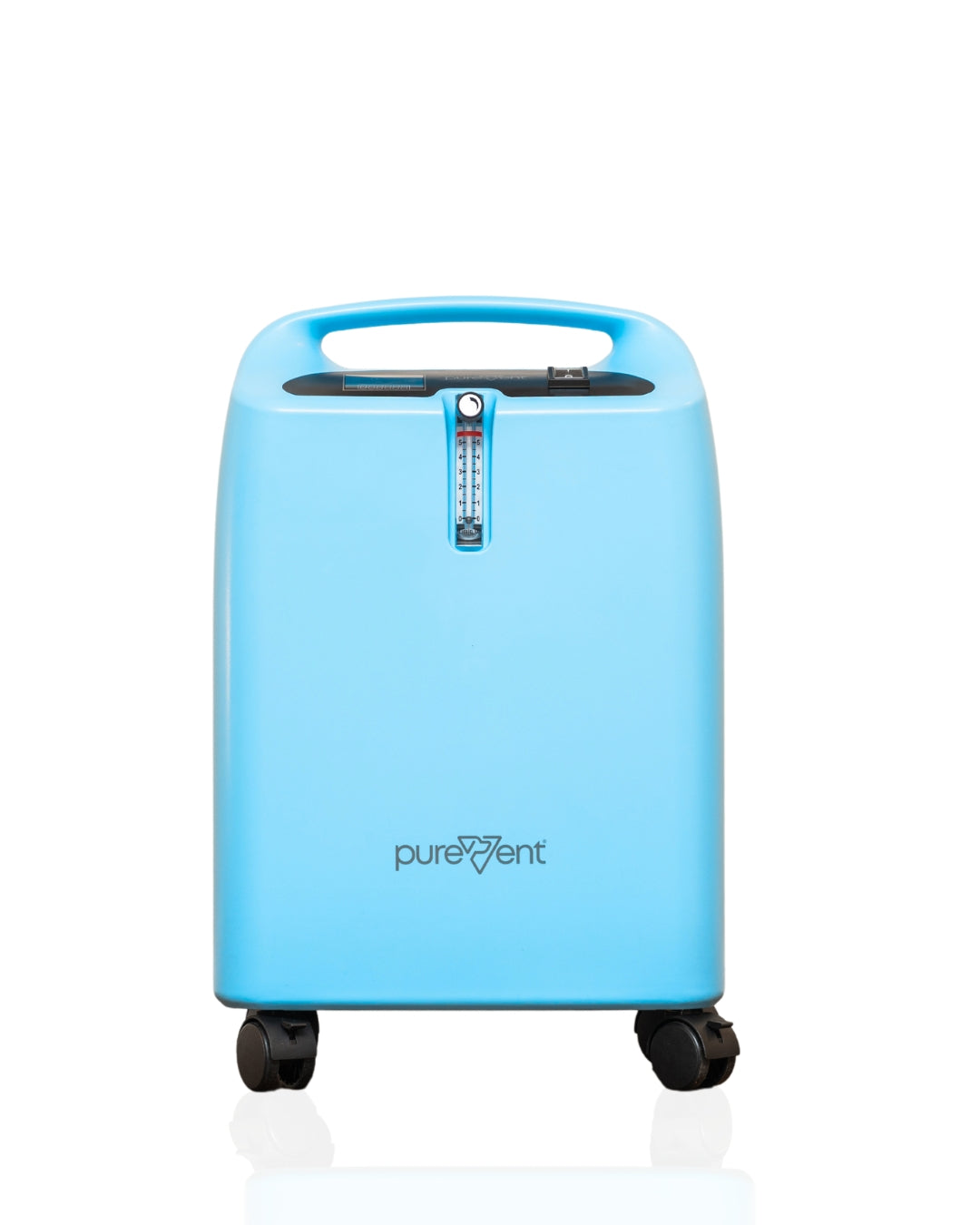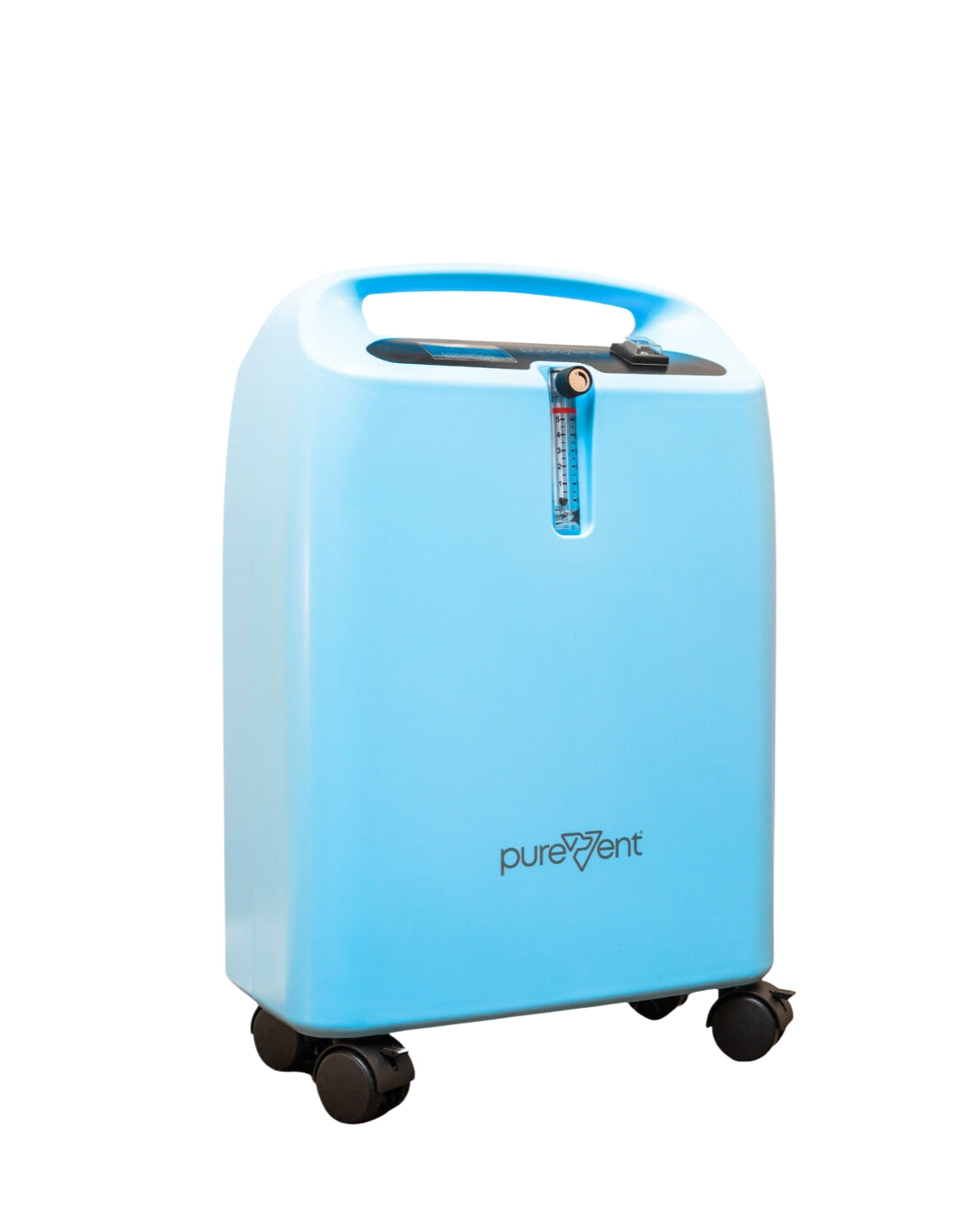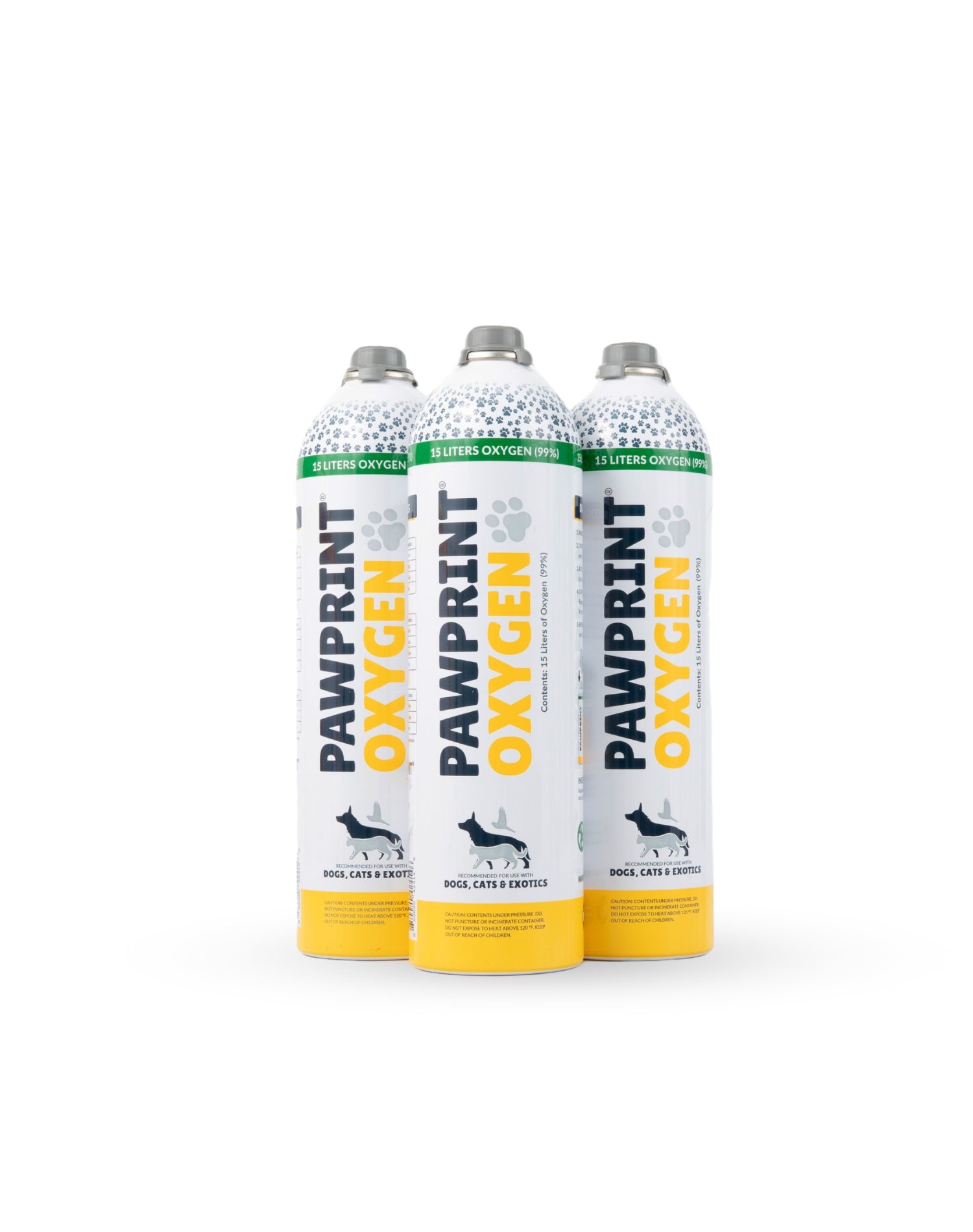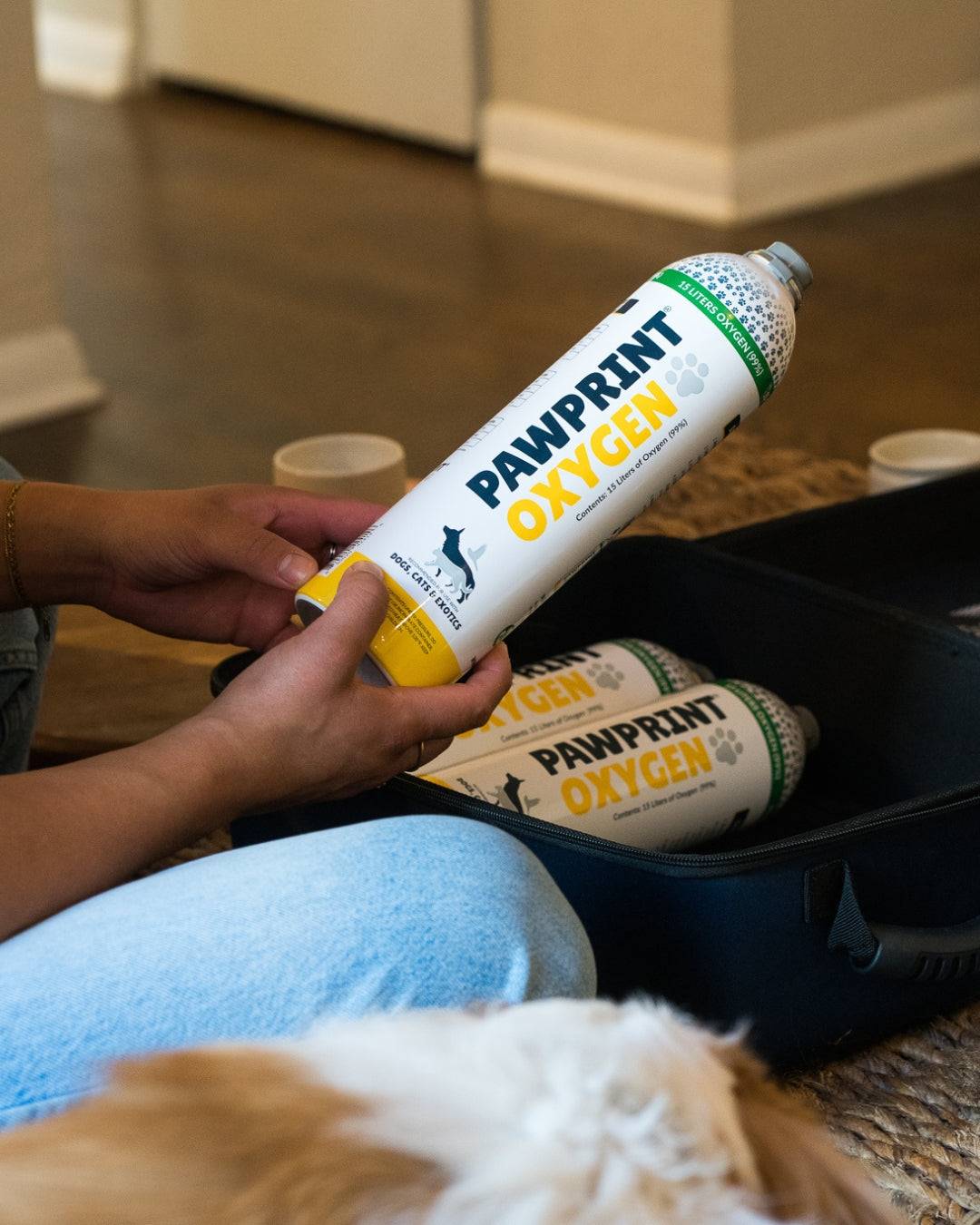What Is a Pet Oxygen Cage?
An oxygen cage for dogs, also known as an oxygen therapy cage, is a device used to deliver concentrated oxygen to dogs that are experiencing respiratory distress or other respiratory conditions. The oxygen cage is an enclosed space that is designed to contain and deliver high levels of pure oxygen to dogs. The oxygen cage is made of clear vinyl panels, allowing dogs to be visually monitored while receiving oxygen therapy treatment.
Structure, Quality and Design of a Pet Oxygen Cage
An oxygen cage is constructed from clear, durable materials such as acrylic or vinyl, allowing for easy observation of the pet inside. The cage is partially sealed to prevent the escape of oxygen and to maintain a stable concentration within the enclosure. They come in various sizes to accommodate different breeds and species of pets, ensuring that each animal has enough space to lie down and move comfortably.
Key features of a medical-grade oxygen cage include:
- Controlled Oxygen Flow: The oxygen cage is connected to an oxygen supply, usually from an oxygen concentrator, which regulates the flow and concentration of oxygen delivered into the enclosure.
- Observation Windows: Clear walls and windows enable continuous monitoring of the pet's condition without having to open the cage, which helps maintain the stable oxygen environment.
- Venturi Adapters: Venturi adapters are included with the Buster ICU Oxygen Cage, and assist in creating a specific oxygen saturation. Most health conditions that require oxygen require a specific saturation of the oxygen given. 40% and 60% saturation are two of the most common, and Venturi Adapters enable pet owners to set their cages to that specific saturation of oxygen to match their pets needs.
Functionality and Benefits of an Oxygen Cage for Your Pet
The primary purpose of an oxygen cage is to increase the amount of oxygen available to the pet, which is crucial in situations where they are unable to breathe efficiently or their blood oxygen levels are critically low. Here are some of the key benefits and functionalities of an oxygen cage:
-
Enhanced Oxygenation: By delivering high concentrations of oxygen directly to the pet, the oxygen cage ensures that the lungs receive more oxygen, which is then transported to the bloodstream. This is particularly beneficial for pets suffering from respiratory distress, heart disease, or trauma.
-
Stress-Free Environment: Unlike some other forms of oxygen delivery, such as masks or nasal cannulas, an oxygen cage allows the pet to move freely and rest comfortably without the added stress of wearing equipment. This can be especially important for anxious or fractious animals.
-
Continuous Monitoring and Adjustments: Pet owners can easily observe the pet's condition through the clear walls of the cage and make real-time adjustments to the oxygen flow. This ensures that the pet receives the best possible care tailored to their specific needs.
-
Safety and Hygiene: The sealed design of the oxygen cage minimizes the risk of contamination and infection, as the environment can be kept clean and sterile. This is vital for pets with weakened immune systems or those recovering from surgery.
-
Versatility in Treatment: Oxygen cages can be used for a wide range of conditions, including pneumonia, asthma, congestive heart failure, collapsed trachea, and more. They are an invaluable tool in both emergency and ongoing care scenarios, providing life-saving support when pets need it most.
When Would My Dog Need an Oxygen Cage?
Oxygen therapy is an essential aspect of veterinary care, particularly for pets experiencing respiratory distress or insufficient oxygen levels in their blood. An oxygen cage, also known as an oxygen kennel or chamber, is a specialized piece of equipment designed to deliver a controlled and concentrated flow of oxygen to animals in need. Understanding when your dog might require this intervention can help you recognize signs of serious health issues and seek timely veterinary assistance.
Signs and Conditions Requiring Oxygen Therapy
-
Respiratory Distress: If your dog is struggling to breathe, showing signs of labored breathing, rapid breathing, or open-mouth breathing (which is unusual for cats), they may be experiencing respiratory distress. This can result from various conditions, including pneumonia, bronchitis, or upper respiratory infections. Immediate oxygen therapy can alleviate the distress and stabilize your pet while the underlying cause is addressed or additional treatments are administered.
-
Congestive Heart Failure: Dogs with congestive heart failure often exhibit symptoms such as coughing, difficulty breathing, and lethargy due to fluid accumulation in the lungs. Oxygen therapy can provide crucial support by ensuring adequate oxygen levels in the bloodstream while additional treatments focus on managing the heart condition and reducing fluid buildup.
-
Trauma or Shock: In cases of severe trauma, such as being hit by a car or sustaining significant injuries, a dog may go into shock. Shock can lead to inadequate oxygenation of tissues, causing further complications. An oxygen cage helps stabilize the dog by maintaining sufficient oxygen levels during the critical early stages of treatment and helps the dog recover in the comfort of their home.
-
Pulmonary Edema: Pulmonary edema, or fluid accumulation in the lungs, can occur due to various reasons, including heart disease, poisoning, or exposure to certain toxins. This condition severely impairs a dog’s ability to breathe efficiently. An oxygen cage can relieve symptoms by delivering high levels of oxygen directly to the lungs, improving overall oxygenation.
-
Anesthesia Recovery: After undergoing anesthesia for surgery or a medical procedure, some dogs may experience respiratory depression or difficulty regaining normal breathing patterns. In such cases, an oxygen cage provides a safe environment where they can receive supplemental oxygen, aiding in a smoother and faster recovery.
Recognizing the Need for Oxygen Therapy
As a pet owner, it’s crucial to be vigilant and aware of signs that indicate your dog may require oxygen therapy. Symptoms to watch for include:
- Persistent coughing or wheezing
- Rapid, shallow, or labored breathing
- Bluish gums or tongue (cyanosis)
- Extreme lethargy or collapse
- Open-mouth breathing or extended neck position while breathing
If you notice any of these signs, it is imperative to begin oxygen therapy, and if needed, to seek additional veterinary care. In the case of an emergency, your veterinarian will assess your dog’s condition and determine if continued oxygen therapy is necessary and if additional medications and treatments are warranted. The timely use of an oxygen cage can significantly improve your pet’s prognosis and provide critical support at home when an emergency arises.
Understanding when your dog might need an oxygen cage and recognizing the signs of respiratory distress can make a life-saving difference. Always consult with your veterinarian if you have concerns about your dog’s breathing or overall health. They can provide the best guidance and treatment options to ensure your furry friend receives the care they need.
Pet Oxygen Cage
The Buster ICU Pet Oxygen Cage is a revolutionary product designed for safe and easy administration of oxygen therapy to pets. Featuring a unique Venturi system, it provides the optimal level of oxygen and disperses carbon dioxide, heat, and humidity, ensuring comfort and safety for your pet.
This is the same Oxygen Cage trusted by thousands of Veterinary Hospitals. Oxygen Chamber must be paired with an Oxygen source (5 or 10 L Concentrator). Made with high-quality materials, it’s durable for everyday veterinary use and protects pets from external elements. Ideal for clinics, hospitals, and home use.
Do I Need an Oxygen Source for My Pet Oxygen Cage?
Yes. An oxygen concentrator is a medical device that generates concentrated oxygen for use in an oxygen cage for pets. The concentrator works by taking in air from the surrounding environment and removing nitrogen, CO2, and other gases to produce a high concentration of pure oxygen. The pure oxygen is then delivered to the pet through oxygen tubing connected to the oxygen cage.
Oxygen concentrators are commonly used in veterinary clinics and animal hospitals for pets that require oxygen therapy for respiratory distress or other medical conditions. They are a reliable and cost-effective way to provide a steady supply of oxygen to pets that require it. They can be used as a safer and user-friendly alternative to large, bulky oxygen tanks.
Oxygen concentrators are also available for home use, and Pawprint Oxygen supplies two models to accommodate a large population of pets, which can be used with all sizes of oxygen cage (small, medium, and large).
Pet Oxygen Concentrator, Pro 5
The Pro 5 Pet Oxygen Concentrator is the perfect solution for pet owners who want to provide their pets with top-notch veterinary care from the comfort of their own home. This innovative device supplies pure oxygen to pets recovering from surgery, dealing with respiratory distress, or other health conditions.
With its durable construction and low noise level, the Pro 5 is built to last and won’t disturb your pet’s rest or relaxation. This concentrator can be used with a small or medium sized oxygen cage.
Pet Oxygen Concentrator, Drive 10
The Drive 10 Pet Oxygen Concentrator is the perfect solution for pet owners who want to provide their pets with top-notch veterinary care from the comfort of their own home. This innovative device supplies pure oxygen to pets recovering from surgery, dealing with respiratory distress, or other health conditions. With its durable construction and low noise level, the Drive 10 is built to last and won’t disturb your pet’s rest or relaxation. And the best part? You’ll never have to worry about refilling an oxygen tank again, as it converts air from its surroundings. The Drive10 can be used with all size oxygen cages, including large.
Providing a Safe, Stress-Free Environment for Your Pet
Understanding when your dog might need an oxygen cage for at-home therapy is crucial for ensuring their health and well-being. Oxygen cages provide a safe, stress-free environment that delivers essential oxygen to dogs suffering from respiratory distress, heart conditions, trauma, or other serious health issues. The ability to monitor and adjust oxygen levels in real-time, along with the versatility of these an oxygen cage to cater to various medical conditions, makes them an invaluable tool for pet owners.
By recognizing the signs of respiratory distress and knowing when to seek veterinary care, you can make informed decisions about your dog’s treatment. Always consult with your veterinarian if you have any concerns about your pet's breathing or overall health. They can provide expert guidance on the best treatment options and ensure that your furry friend receives the necessary care. With the right approach and timely intervention, oxygen therapy with an oxygen cage at home can significantly improve your dog’s quality of life and recovery prospects.



